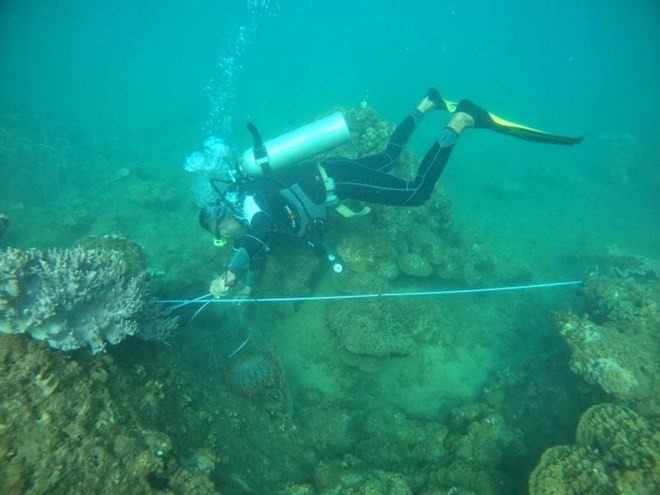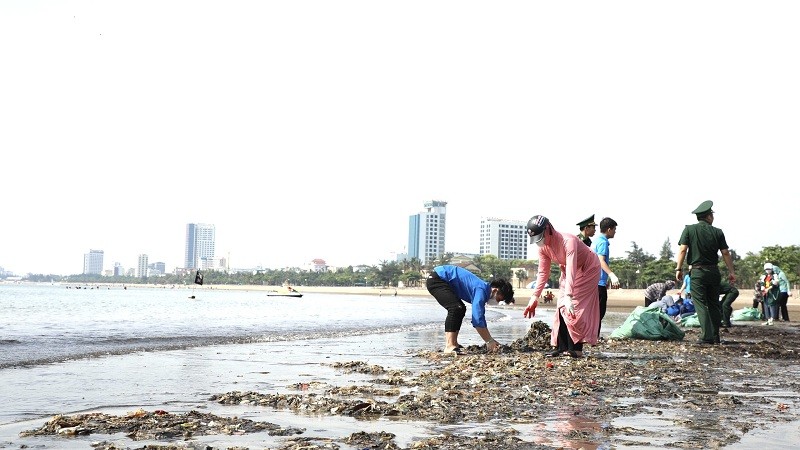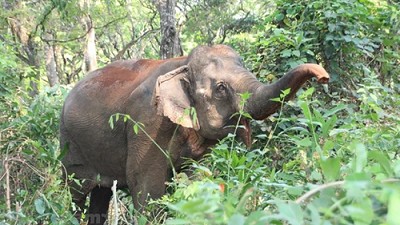
Marine biological diversity in Viet Nam
Latest
 |
| Activities to protect and restore coral reefs and marine ecology are being implemented in Cu Lao Cham Marine Protected Area, Quang Nam. (Source: laodong) |
“Biological diversity”, by article 2, 1992 Convention on Biological diversity, means the variability among living organisms from all sources including, inter alia, terrestrial, marine and other aquatic ecosystems and the ecological complexes of which they are part; this includes diversity within species, between species and of ecosystems.
Biodiversity conservation
Climate change, deterioration of marine and coastal environment quality, unsustainable human exploitation and use of marine resources and environment have adverse impacts on marine life and loss of marine biodiversity. Many marine species decreased in number, some species became locally extinct. The decline in biodiversity has led to the drop in the number of economically valuable species, directly affecting the economy and living conditions of humans.
Biodiversity conservation is the protection of the abundance of important, specific or representative natural ecosystems; protection of regular or seasonal natural habitats of wild species, environmental landscapes, unique beauty of nature; raising, planting and caring for species on the List of endangered, precious and rare species prioritized for protection; long-term storage and preservation of genetic specimens.
High biodiversity
Vietnam is among 10 countries with high biodiversity with about 7,500 species of microbial strains; 20,000 species of terrestrial and aquatic higher plants; 10,500 species of land animals; 1,000 species of freshwater fish.
Under the sea there are over 7,000 species of invertebrates, about 2,500 species of fish and approximately 50 species of sea snakes, sea turtles and marine mammals. Vietnam is rated by IUCN as one of 10 marine biodiversity centers and one of 20 seas with rich seafood resources in the world with about 11,000 species residing in more than 20 typical ecosystem types in 6 different marine biodiversity regions.
Along the Vietnamese coast, there are 114 estuaries, 12 lagoons, 50 pools/bays, thousands of large and small islands, many ecosystems, coastal and coastal habitats. Of the total species discovered, there are about 6,000 benthic species; 2,038 species of fish, of which over 100 can be caught for economic purposes; 653 species of seaweed; 657 species of zooplankton; 94 species of mangrove plants; 225 species of marine shrimp; 14 species of seagrass; 15 species of sea snakes; 12 species of marine mammals; 5 species of sea turtles and 43 species of waterfowl.
 |
| Garbage collection at Cua Lo beach (Nghe An). (Source: nhandan) |
There are also about 1,300 species found on the islands. Vietnam’s marine zones have about 1,122 square km of coral reefs with about 350 species of stony corals widely distributed from North to South. Living closely with coral reef areas are over 2,000 species of benthic creatures and fish, including over 400 species of reef fish and many other specialties.
Mangroves have about 252,500ha, concentrated in the Mekong Delta waters (191,800ha). The seagrass beds are distributed from north to south and along the islands, at depths from 0 - 20m, with a total area of over 5,583ha, concentrated in the coastal islands of Phu Quoc, Con Dao, Spratly Islands and some central estuaries. Initially, scientists discovered 125 benthic animals and 158 species of seaweed living in and under seagrass beds.









